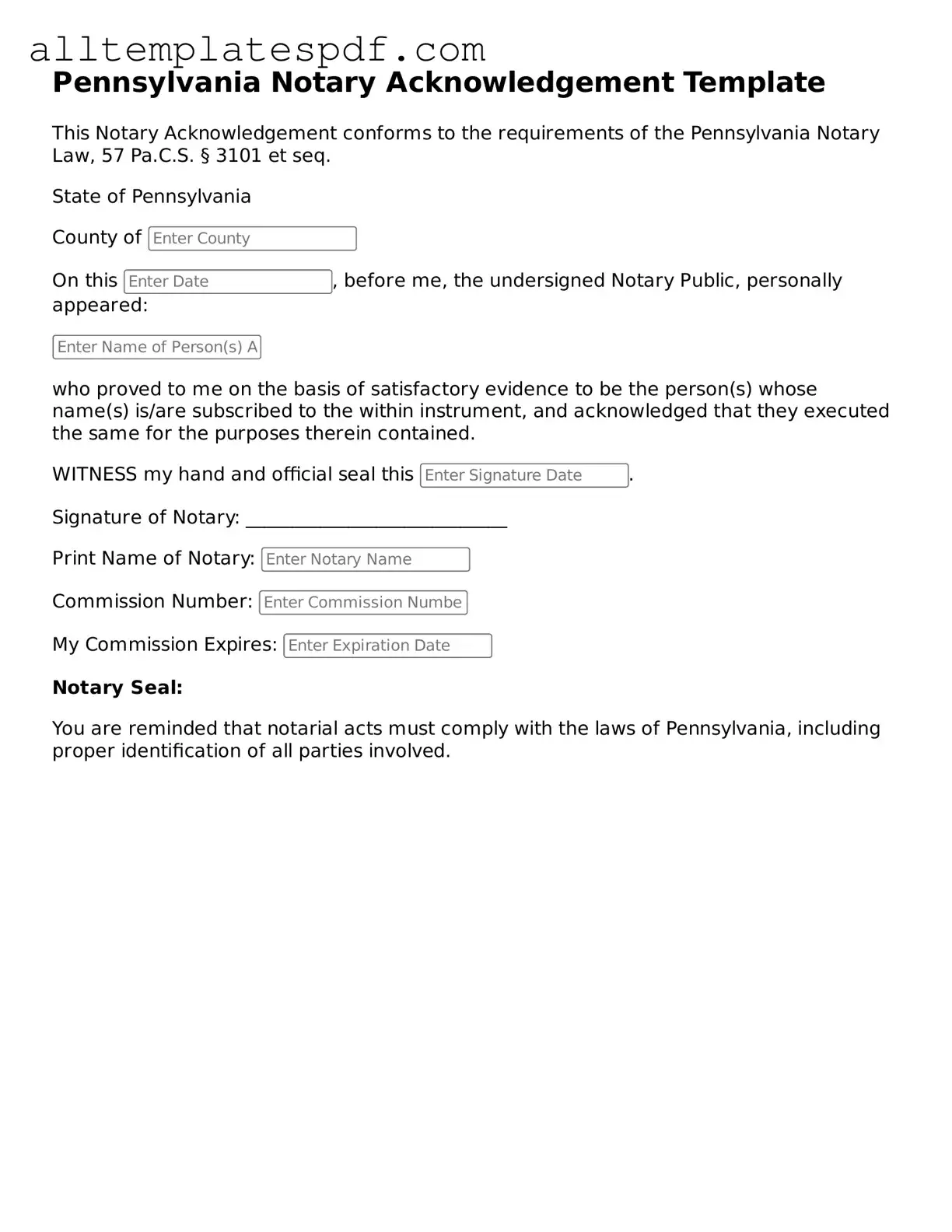Filling out the Pennsylvania Notary Acknowledgement form requires attention to detail. One common mistake is failing to include the correct date. The date is crucial as it indicates when the acknowledgment took place. Leaving it blank or entering an incorrect date can lead to confusion and may invalidate the document.
Another frequent error involves the notary's signature. The notary must sign the form in the designated area. Omitting the signature or signing in the wrong spot undermines the authenticity of the acknowledgment. Always double-check that the signature is present and correctly placed.
People often overlook the importance of the notary's seal. The seal must be affixed to the document for it to be considered valid. Forgetting to include the seal can render the acknowledgment ineffective. Ensuring that the seal is clear and legible is equally important.
Incorrectly identifying the signer is another mistake that can lead to issues. The form requires the name of the person whose signature is being acknowledged. Providing an incorrect name or failing to include it can create complications later. Always verify the name matches the identification presented.
Additionally, some individuals fail to provide the appropriate identification details of the signer. The form typically requires a description of the identification used. Not including this information can raise questions about the legitimacy of the acknowledgment. Be thorough in documenting the type of ID and any relevant numbers.
Omitting the notary's commission expiration date is also a common oversight. This date indicates how long the notary is authorized to perform acknowledgments. Leaving it off can lead to challenges regarding the validity of the notarial act. Always ensure this date is clearly stated.
Lastly, many people neglect to review the entire form before submission. Errors can be easily missed if the form is not carefully checked. Taking the time to review each section helps catch mistakes that could invalidate the acknowledgment. A thorough final check can save time and prevent complications.
